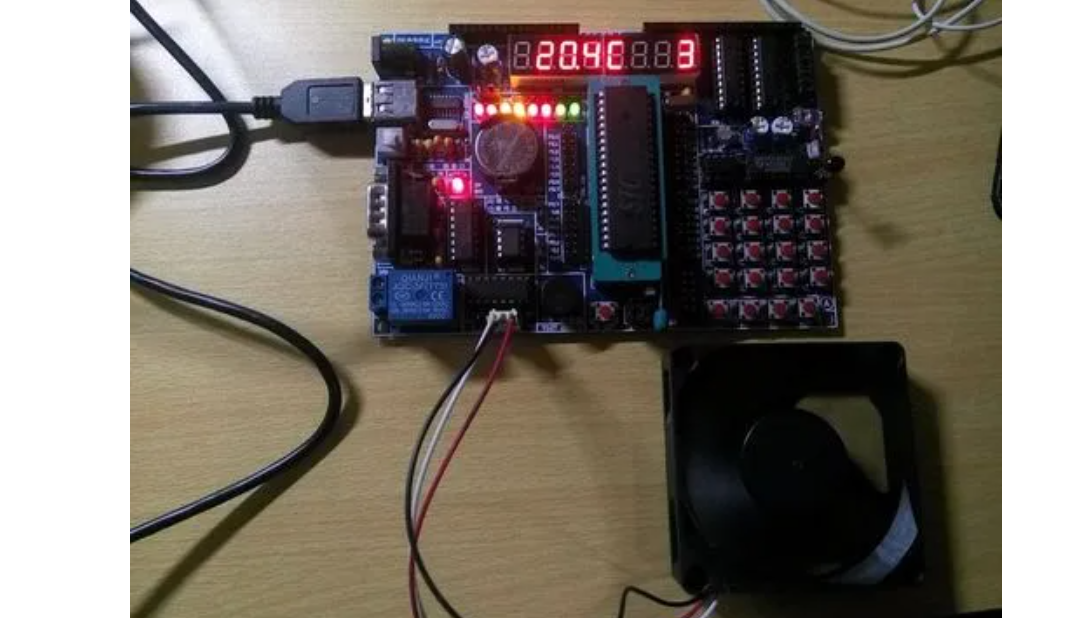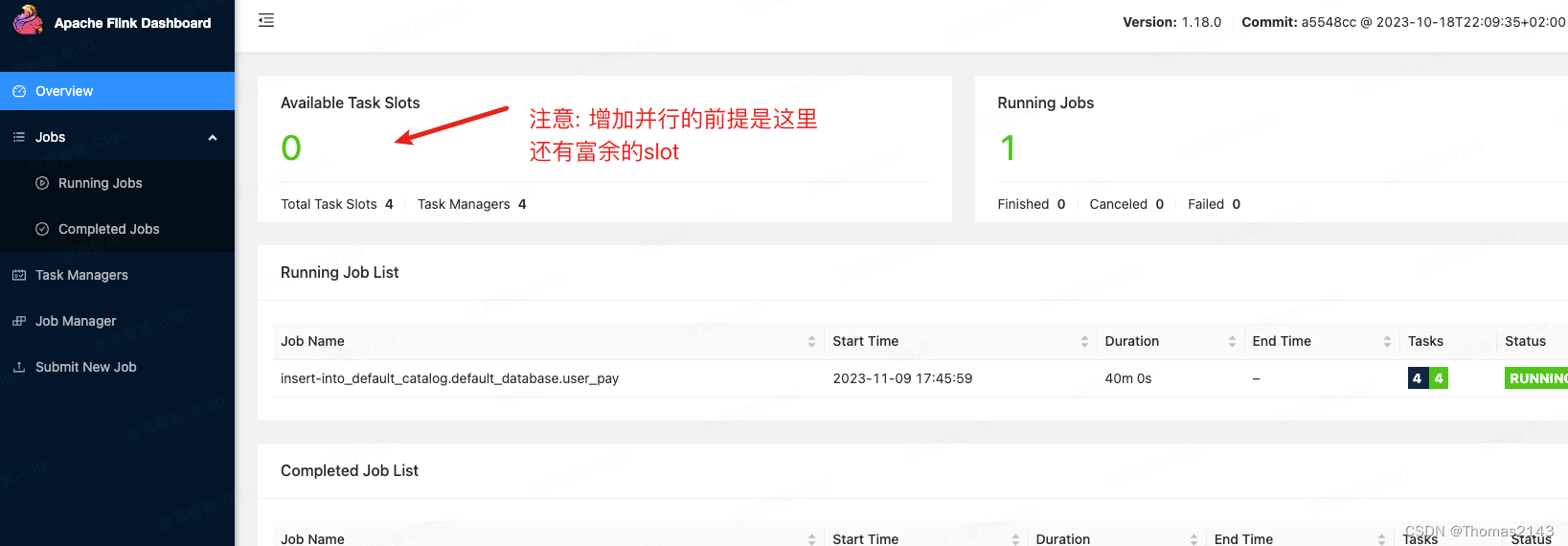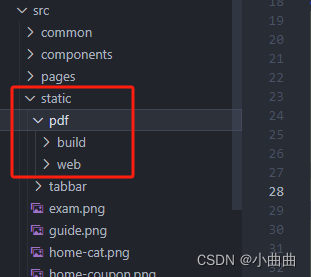文章目录
- 1 寻找桥的算法
- 2 桥的代码实现
- 3 寻找割点的算法
- 4 割点的代码实现
1 寻找桥的算法
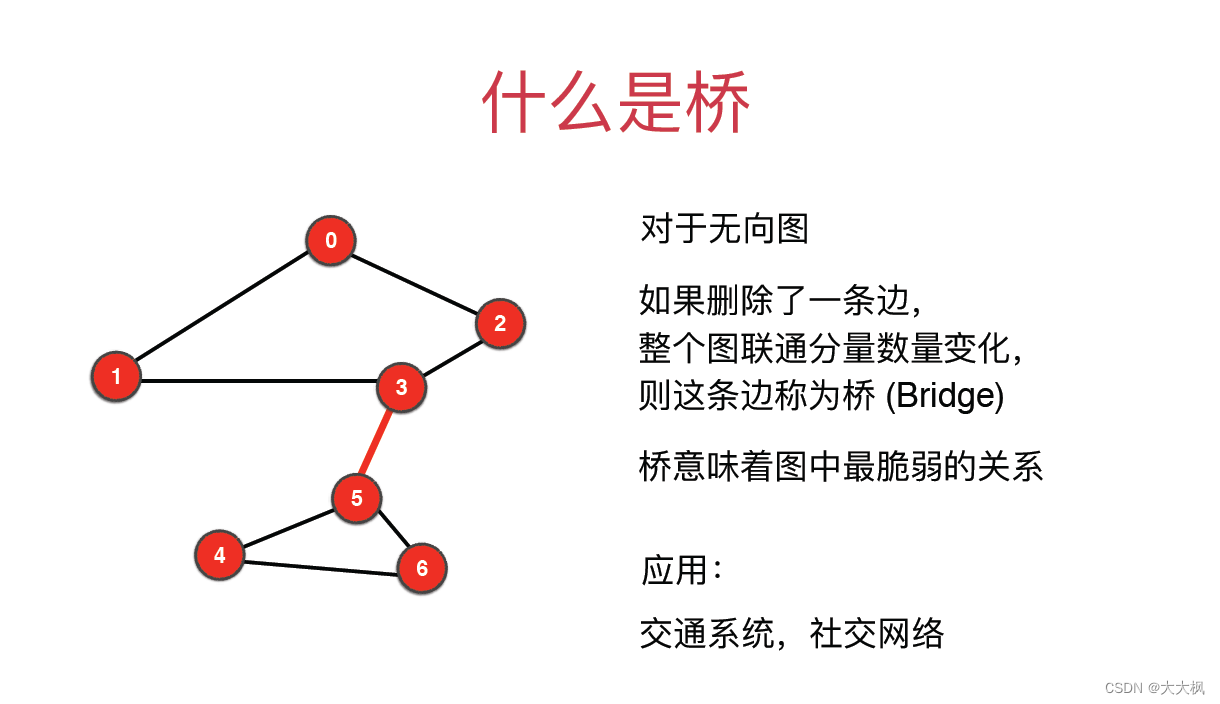
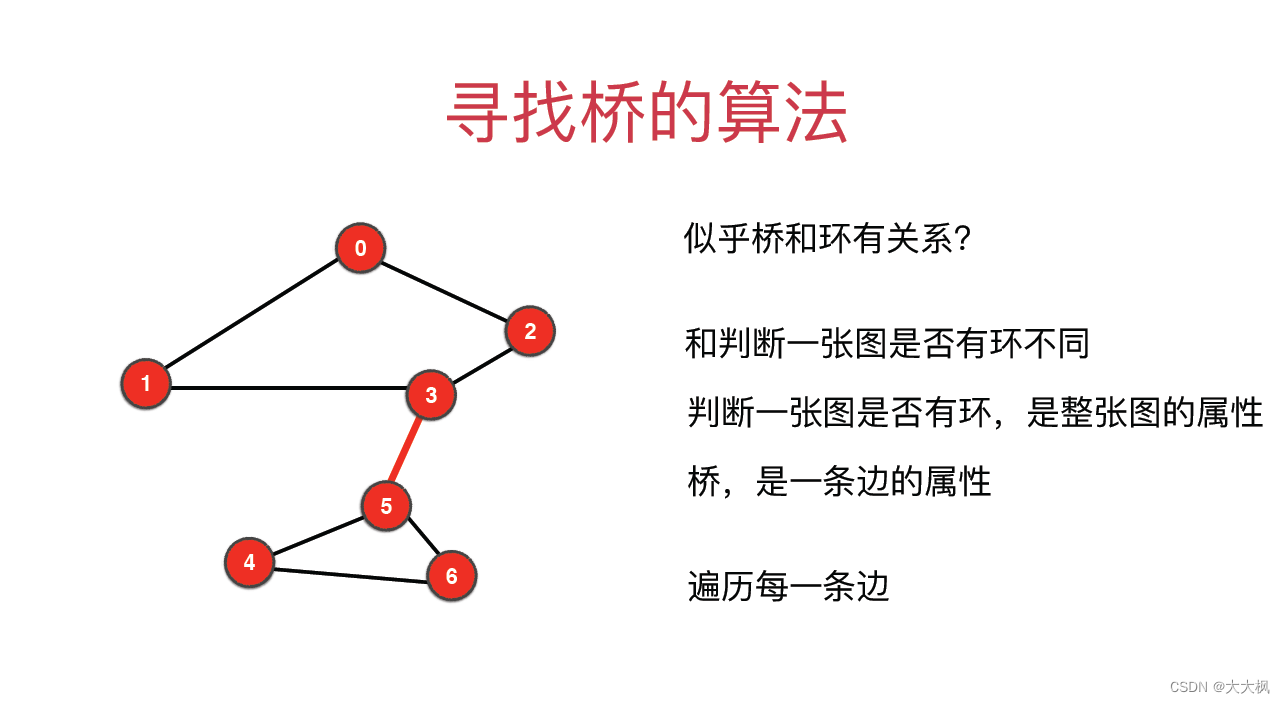
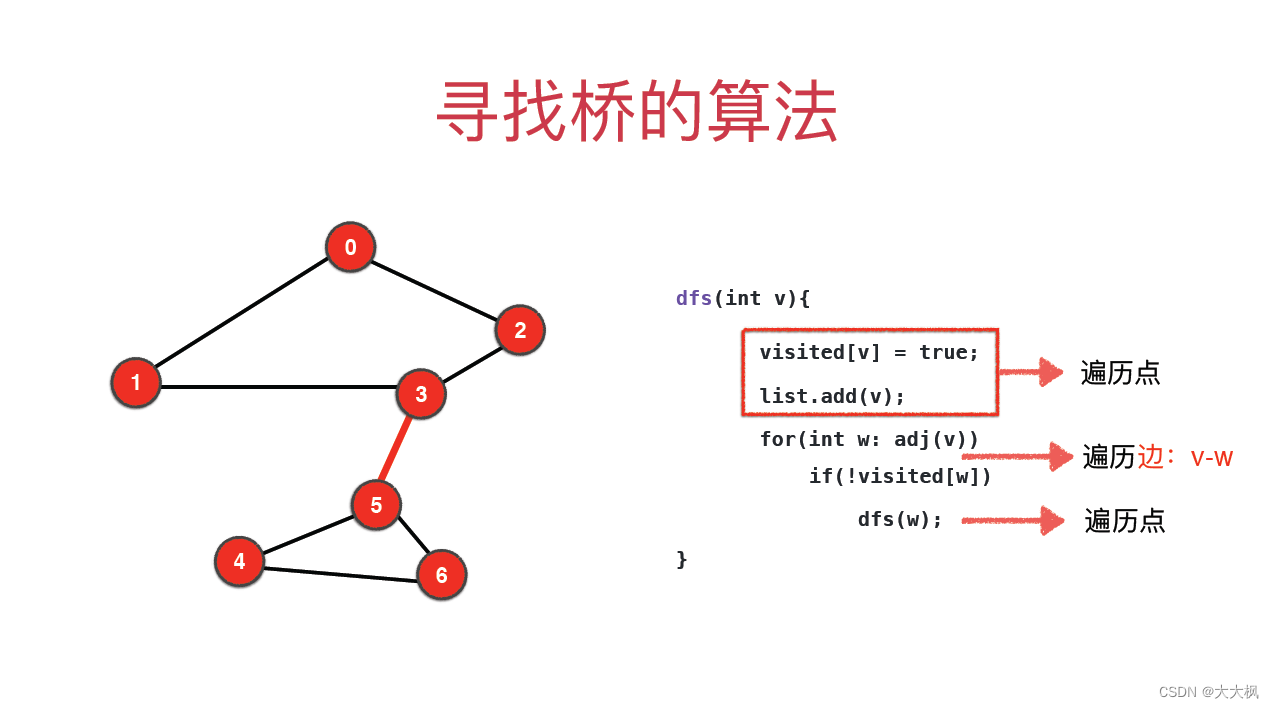
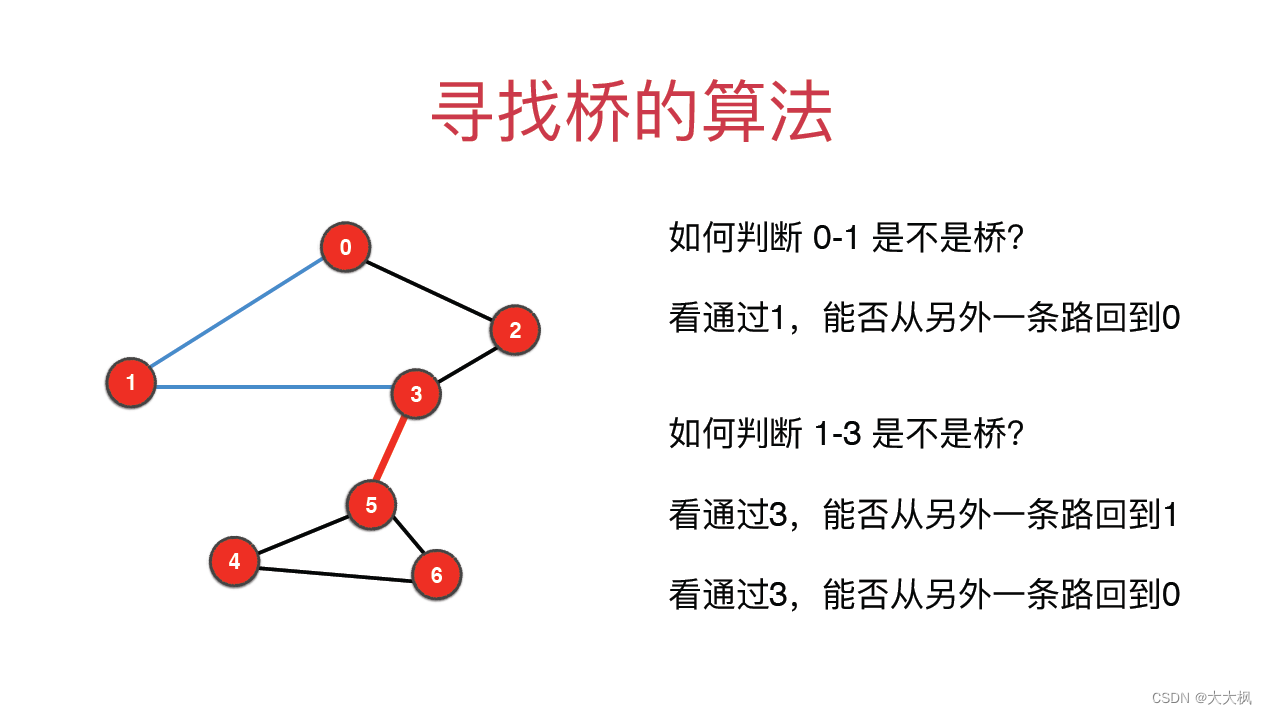
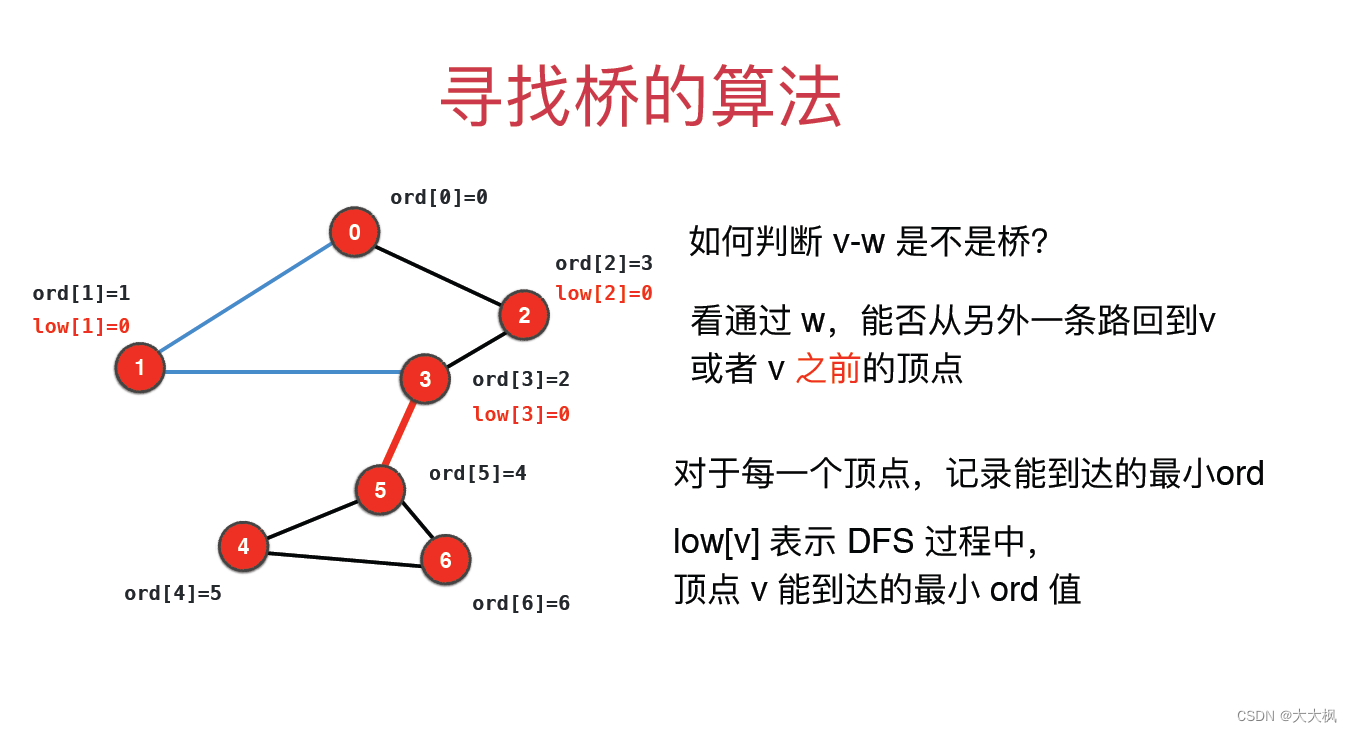
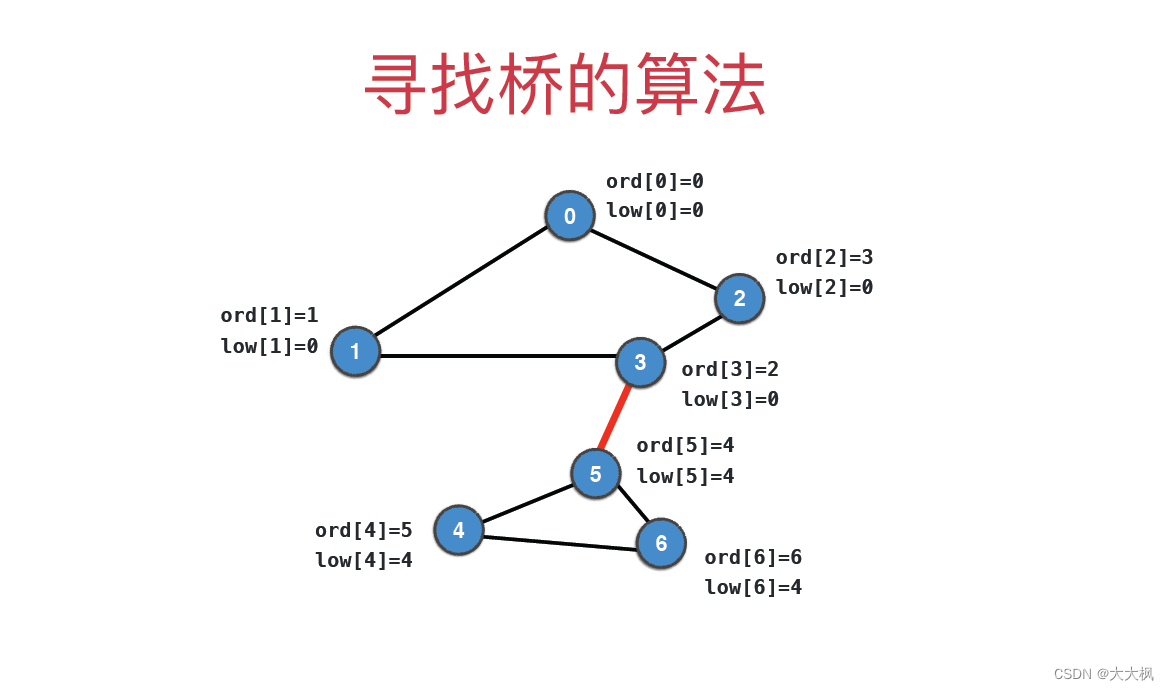
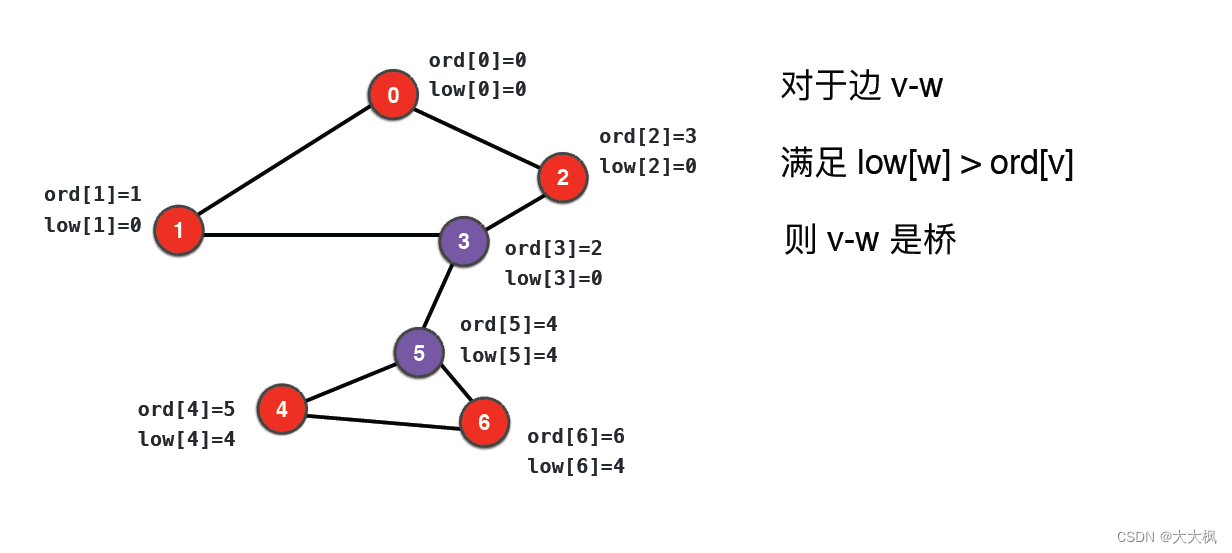
2 桥的代码实现
package Chapt06_Bridge;
import java.util.ArrayList;
public class FindBridges {
private Graph G;
private boolean[] visited;
//ord数组记录访问的顺序
private int ord[];
//low数组记录该顶点可以访问到的ord[值]最小的[顶点]
private int low[];
//cnt用来记录步数,给order赋值
private int cnt;
// Edge类型的动态数组
private ArrayList<Edge> res;
public FindBridges(Graph G){
this.G = G;
visited = new boolean[G.V()];
res = new ArrayList<>();
ord = new int[G.V()];
low = new int[G.V()];
cnt = 0;
for(int v = 0; v < G.V(); v ++)
if(!visited[v])
dfs(v, v);
}
private void dfs(int v, int parent){
visited[v] = true;
ord[v] = cnt;
// 初始的时候,low的值就是访问的顺序值,在递归return的时候才进行更新
low[v] = ord[v];
cnt ++;
// 通过邻接表,挨个查找相邻的节点
for(int w: G.adj(v))
//如果有相邻的节点还没有被访问过,就dfs
if(!visited[w]){
dfs(w, v);
// 对上一个节点的low值进行更新
low[v] = Math.min(low[v], low[w]);
// 如果子节点的low值比父节点的ord大,说明两点之间是一座桥。
// 因为如果都在同一个环内,low值一定是父节点之前的节点,数字会更小,那么就不是桥,桥是不可回头的。
if(low[w] > ord[v])
res.add(new Edge(v, w));
}
else if(w != parent) //如果该点访问过,不继续dfs,只更新low值
low[v] = Math.min(low[v], low[w]);
}
public ArrayList<Edge> result(){
return res;
}
public static void main(String[] args){
Graph g = new Graph("g2.txt");
FindBridges fb = new FindBridges(g);
System.out.println("Bridges in g2 : " + fb.result());
Graph g2 = new Graph("g8.txt");
FindBridges fb2 = new FindBridges(g2);
System.out.println("Bridges in g8 : " + fb2.result());
Graph g3 = new Graph("g3.txt");
FindBridges fb3 = new FindBridges(g3);
System.out.println("Bridges in g3 : " + fb3.result());
Graph tree = new Graph("tree.txt");
FindBridges fb_tree = new FindBridges(tree);
System.out.println("Bridges in tree : " + fb_tree.result());
}
}
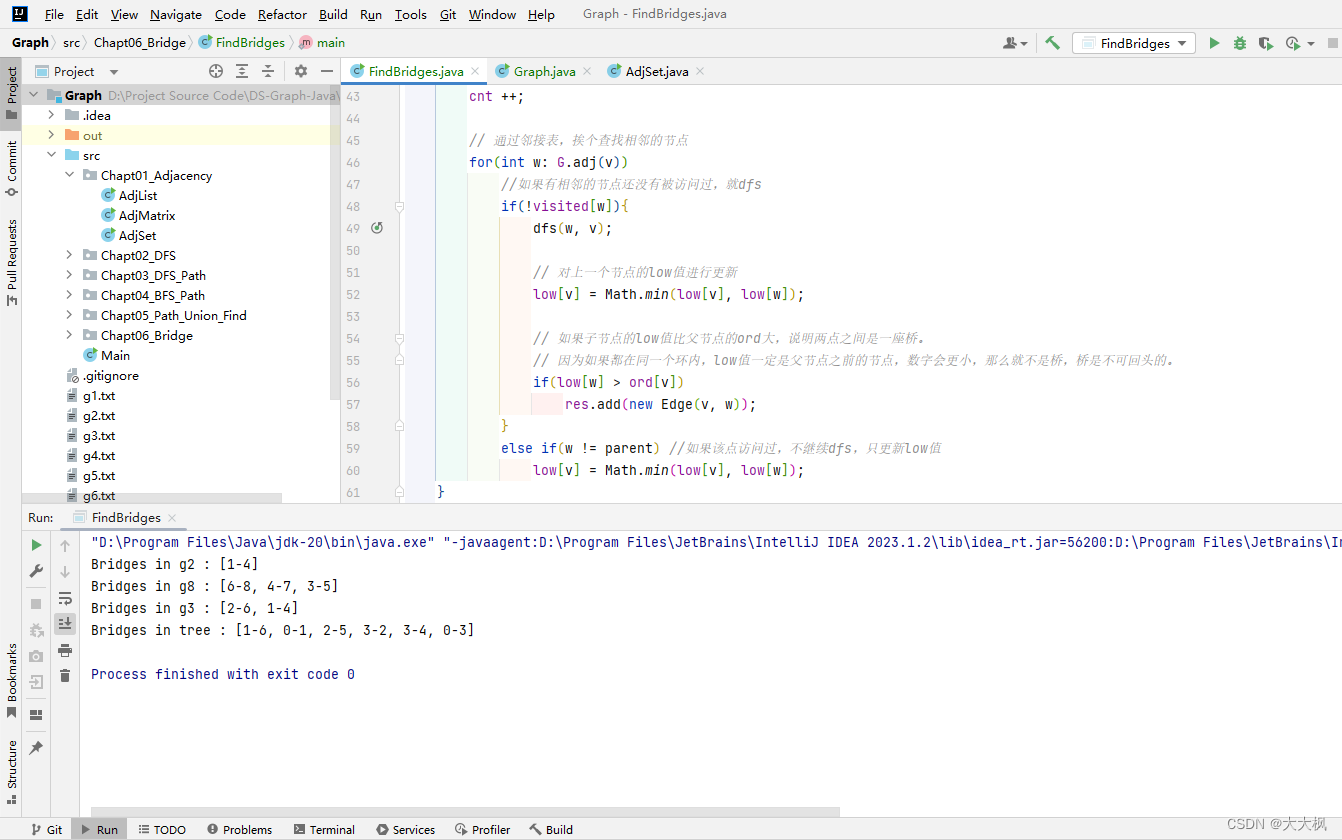
3 寻找割点的算法
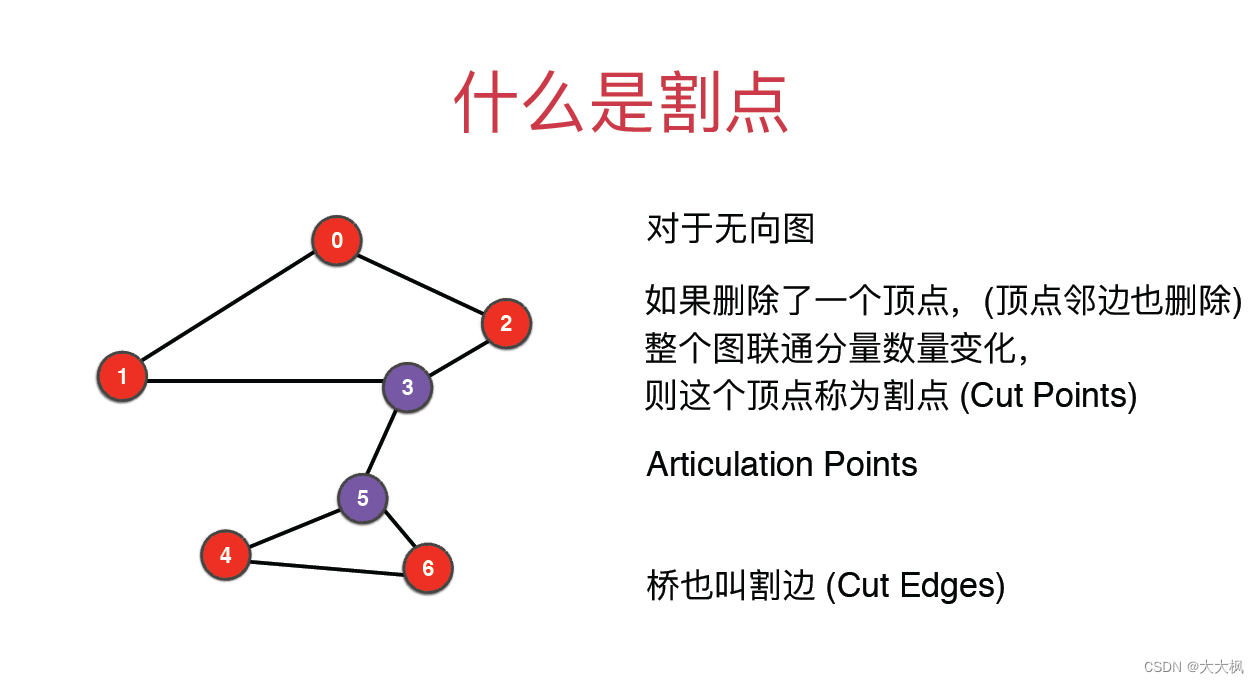
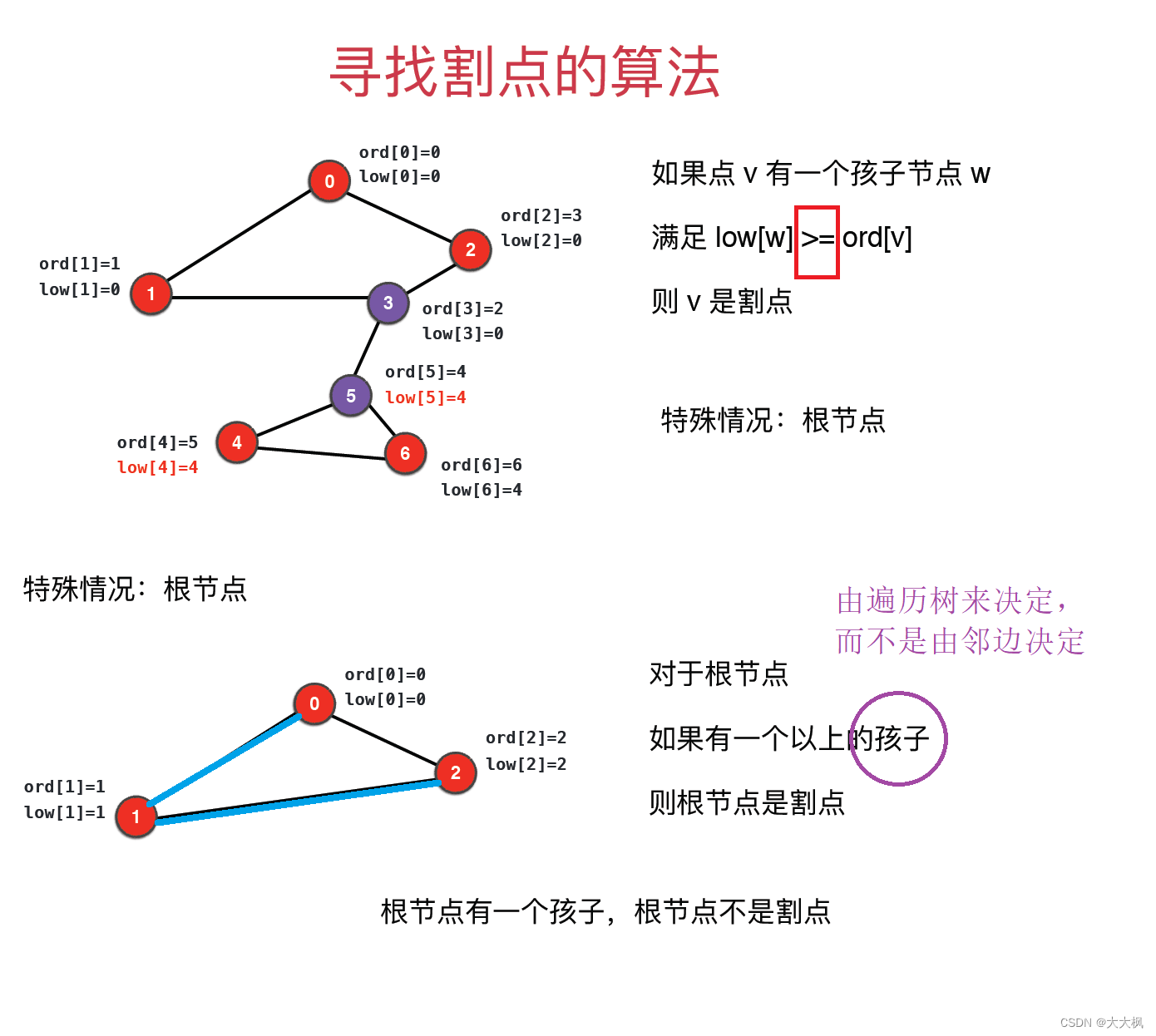
4 割点的代码实现
package Chapt06_Bridge_And_CutPoints;
import java.util.HashSet;
public class FindCutPoints {
private Graph G;
private boolean[] visited;
private int[] ord;
private int[] low;
private int cnt;
private HashSet<Integer> res;
public FindCutPoints(Graph G){
this.G = G;
visited = new boolean[G.V()];
res = new HashSet<>();
ord = new int[G.V()];
low = new int[G.V()];
cnt = 0;
for(int v = 0; v < G.V(); v ++)
if(!visited[v])
dfs(v, v);
}
private void dfs(int v, int parent){
visited[v] = true;
ord[v] = cnt;
low[v] = ord[v];
cnt ++;
// 记录子节点的数量
int child = 0;
for(int w: G.adj(v))
if(!visited[w]){
dfs(w, v);
low[v] = Math.min(low[v], low[w]);
//割点的判断
if(v != parent && low[w] >= ord[v])
res.add(v);
child ++;
if(v == parent && child > 1)
res.add(v);
// if(v == parent && child = 1) -- 单环肯定不是割点
}
else if(w != parent)
low[v] = Math.min(low[v], low[w]);
}
public HashSet<Integer> result(){
return res;
}
public static void main(String[] args){
Graph g = new Graph("g8.txt");
FindCutPoints fc = new FindCutPoints(g);
System.out.println("Cut Points in g8 : " + fc.result());
Graph g2 = new Graph("g2.txt");
FindCutPoints fc2 = new FindCutPoints(g2);
System.out.println("Cut Points in g2 : " + fc2.result());
Graph tree = new Graph("tree.txt");
FindCutPoints fc3 = new FindCutPoints(tree);
System.out.println("Cut Points in tree : " + fc3.result());
}
}
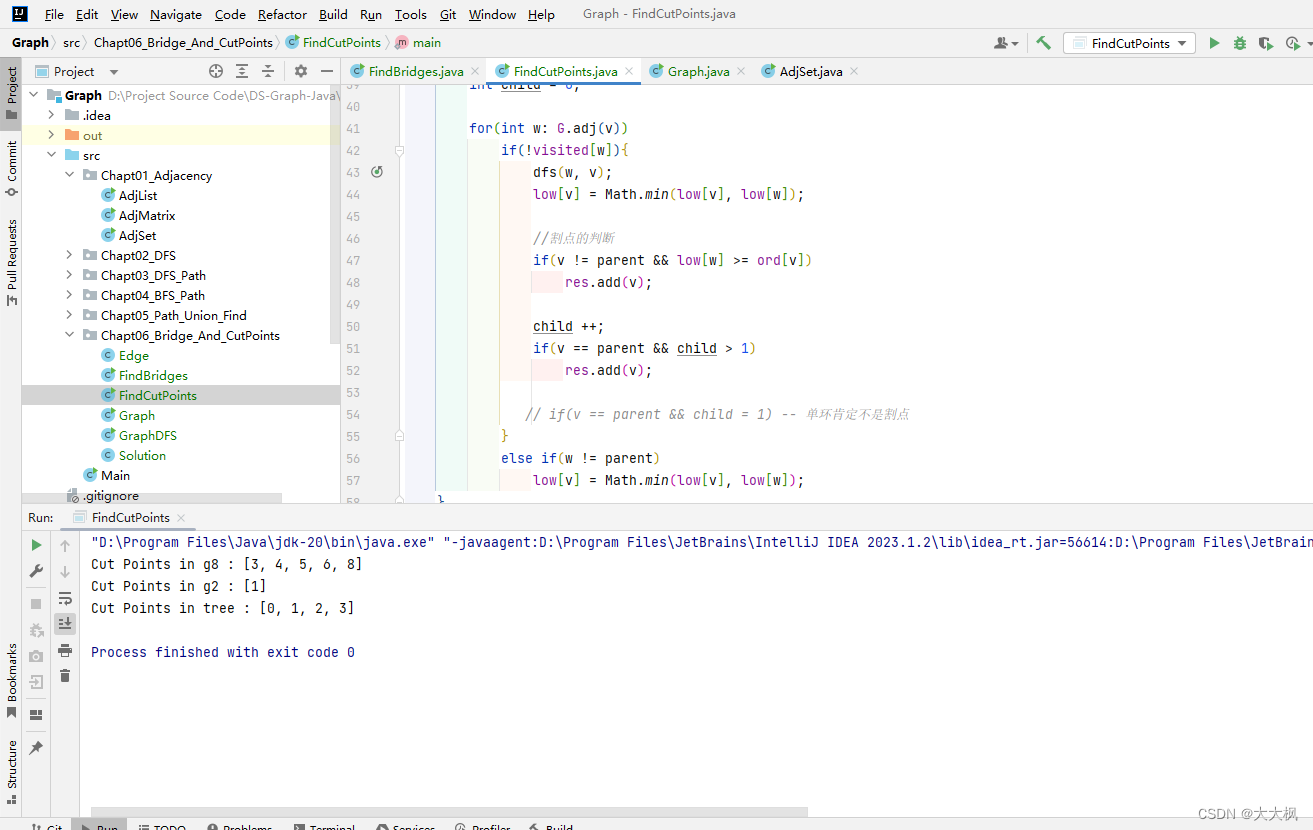
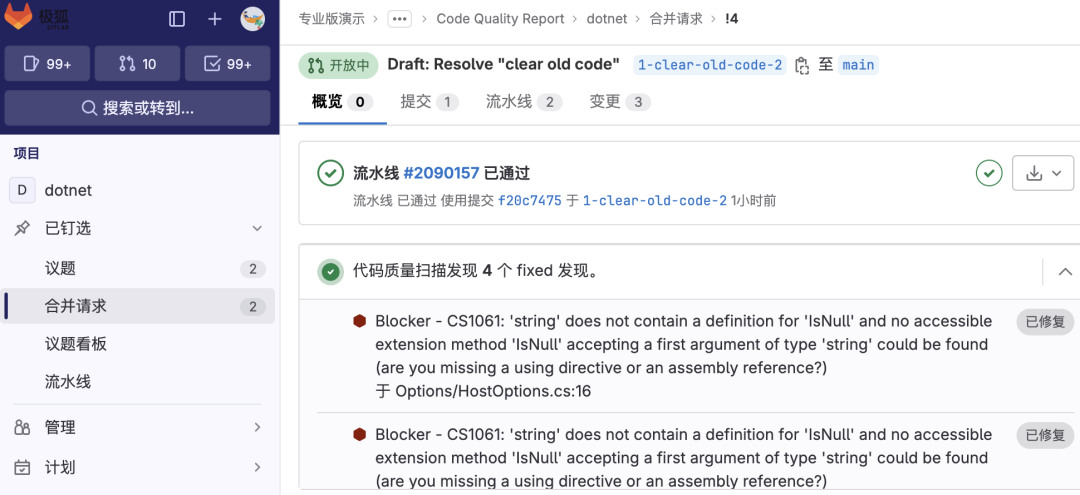






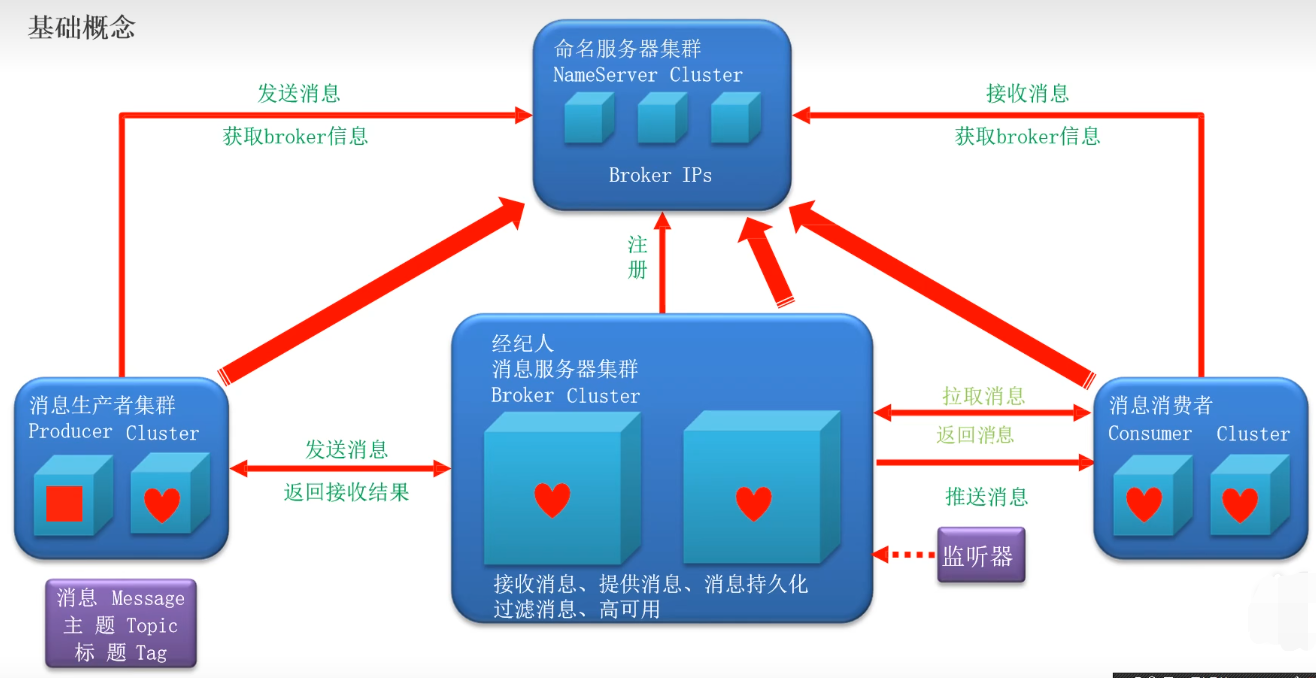
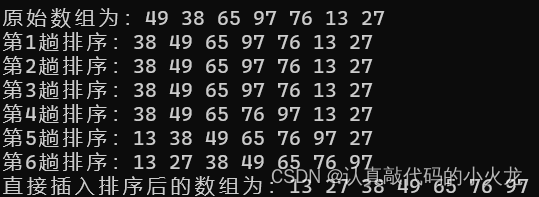
![对称二叉数[简单]](https://img-blog.csdnimg.cn/e3496eb8ad964a0b82846415f804e142.png)

